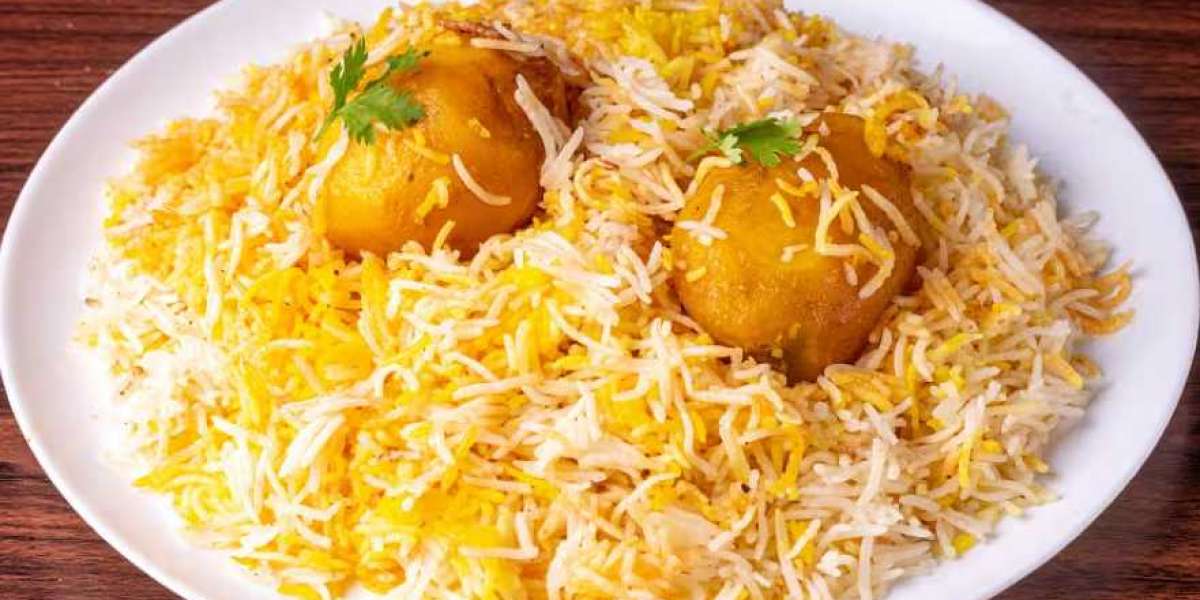Few dishes evoke as much passion and admiration as Chicken Biryani, a dish synonymous with celebration, indulgence, and the rich culinary heritage of South Asia. With its intricate layers of fragrant rice, tender chicken, and a harmonious blend of spices, chicken biryani is a meal that transcends cultural and geographical boundaries. Each region, from Hyderabad to Kolkata and beyond, adds its own unique spin, making biryani a versatile and universally loved dish.
This blog dives into the history, preparation, regional variations, and tips for mastering the perfect chicken biryani.
The Origins of Biryani
Biryani's origins are shrouded in history, with its roots likely tracing back to Persia. The word "biryani" is derived from the Persian words birian (fried before cooking) and birinj (rice). It is believed that biryani came to India with Persian invaders or via trade routes, where it evolved into various regional forms, absorbing local flavors and traditions.
Chicken biryani specifically became popular due to its use of poultry, which is both widely available and adaptable to different spice profiles. Over time, chicken biryani has become a household favorite, revered for its ability to transform everyday ingredients into an extraordinary feast.
Key Elements of Chicken Biryani
A perfect chicken biryani is the sum of its carefully curated components. Let’s explore these elements in detail:
1. Rice
The backbone of biryani is fragrant, long-grained rice. Basmati rice is the preferred choice, renowned for its aroma and delicate texture. Proper cooking and seasoning of the rice are crucial to achieving the perfect balance.
2. Chicken
The chicken is marinated in a blend of yogurt, spices, and aromatics to ensure tenderness and flavor infusion. Bone-in chicken is often preferred for its rich taste and juiciness.
3. Spices
Biryani relies on a medley of spices like cumin, coriander, cardamom, cinnamon, cloves, and star anise. These spices lend depth and complexity to the dish.
4. Herbs
Fresh herbs like cilantro and mint play a vital role in adding freshness and balancing the richness of the spices.
5. Aromatics
Caramelized onions, garlic, ginger, and green chilies are essential for building the flavor base.
6. Layering
Layering is what distinguishes biryani from a simple rice dish. Alternating layers of rice and chicken ensure every bite is a blend of flavors and textures.
7. Saffron and Ghee
Saffron-infused milk and ghee (clarified butter) elevate biryani, imparting richness and a golden hue.
Classic Chicken Biryani Recipe
Here’s a step-by-step guide to preparing a traditional chicken biryani.
Ingredients
For the Rice:
- 2 cups basmati rice
- 4-5 cups water
- 2-3 cloves
- 1 cinnamon stick
- 2 green cardamom pods
- 1 bay leaf
- Salt (to taste)
For the Chicken:
- 500g bone-in chicken pieces
- 1 cup yogurt
- 2 tablespoons ginger-garlic paste
- 1 teaspoon turmeric powder
- 1 teaspoon red chili powder
- 1 teaspoon garam masala
- 1 teaspoon coriander powder
- Salt (to taste)
For the Gravy:
- 3 large onions (thinly sliced)
- 2 tomatoes (finely chopped)
- 4 green chilies (slit)
- ½ cup chopped cilantro
- ½ cup chopped mint leaves
- 2-3 tablespoons ghee or oil
- Whole spices (2 cloves, 1 cinnamon stick, 2 cardamom pods, 1 star anise)
For Garnish and Layering:
- Saffron strands soaked in 2 tablespoons of warm milk
- 2 tablespoons ghee
- Fried onions (for topping)
- Boiled eggs (optional, for garnish)
Step-by-Step Instructions
1. Prepare the Rice:
- Rinse basmati rice until the water runs clear. Soak for 30 minutes.
- Bring water to a boil with salt, bay leaf, cloves, cinnamon, and cardamom.
- Add the rice and cook until 70% done (the grains should be firm but not fully cooked). Drain and set aside.
2. Marinate the Chicken:
- In a bowl, mix yogurt, ginger-garlic paste, turmeric, chili powder, coriander powder, garam masala, and salt.
- Add the chicken pieces, ensuring they are well coated. Marinate for at least 30 minutes (or overnight for deeper flavor).
3. Cook the Chicken:
- Heat ghee or oil in a heavy-bottomed pan. Add whole spices and sauté until fragrant.
- Add the sliced onions and cook until golden brown. Reserve a portion for garnishing.
- Add tomatoes, green chilies, and a pinch of salt. Cook until the tomatoes are soft and oil separates.
- Add the marinated chicken and cook until the chicken is tender and coated in the masala.
4. Assemble the Biryani:
- In a heavy-bottomed pot or Dutch oven, layer half the cooked rice.
- Add the chicken mixture, spreading it evenly.
- Top with the remaining rice. Sprinkle saffron milk, fried onions, chopped herbs, and a drizzle of ghee over the top.
5. Dum Cooking:
- Cover the pot with a tight-fitting lid or seal it with dough to trap steam.
- Cook on low heat for 20-30 minutes (dum method) to allow the flavors to meld.
6. Serve: Gently fluff the biryani and serve hot with raita, salad, or a boiled egg for garnish.
Regional Variations of Chicken Biryani
Chicken biryani takes on unique forms across regions, each with its own twist on spices, cooking techniques, and ingredients:
1. Hyderabadi Chicken Biryani
Known for its dum method, this version layers raw marinated chicken with partially cooked rice, ensuring the meat cooks in its juices. A generous use of saffron and caramelized onions defines its luxurious flavor.
2. Kolkata Chicken Biryani
This variation, influenced by Mughal cuisine, is milder and incorporates potatoes and boiled eggs, making it hearty and unique.
3. Lucknowi (Awadhi) Chicken Biryani
Aromatic and subtly spiced, this biryani uses a yakhni (broth) to flavor the rice. It’s known for its refined taste and delicate layering.
4. Malabar Chicken Biryani
Hailing from Kerala, this biryani uses short-grain rice (jeerakasala), coconut oil, and curry leaves for a distinctive coastal flavor.
5. Sindhi Chicken Biryani
A spicier variant from Pakistan, it incorporates potatoes, yogurt, and tangy tomatoes for a rich and bold taste.
Tips for the Perfect Chicken Biryani
- Use Quality Ingredients: Opt for aged basmati rice, fresh spices, and high-quality chicken.
- Layering Matters: Proper layering ensures every bite has the perfect balance of rice, chicken, and masala.
- Master the Dum Technique: Cooking on low heat allows the flavors to infuse and prevents overcooking.
- Avoid Overcooking Rice: Parboil the rice to 70% doneness for a non-mushy biryani.
- Don’t Skimp on Onions: Caramelized onions are key to adding sweetness and depth.
Serving Suggestions
Chicken biryani is a complete meal, but pairing it with the right sides can elevate the experience:
- Raita: A yogurt-based side with cucumber, mint, or onions.
- Salad: A fresh salad of onions, cucumbers, and tomatoes.
- Pickles and Chutneys: Add tang and spice to the dish.
- Desserts: End the meal with traditional sweets like kheer or gulab jamun.
The Legacy of Chicken Biryani
From festive gatherings to everyday meals, chicken biryani has become a culinary icon, celebrated for its ability to bring people together. Its universal appeal lies in its adaptability—whether you prefer it mild or fiery, simple or elaborate, there’s a biryani recipe to suit every palate.
Mastering chicken biryani is a rewarding journey, offering not just a delicious meal but a deeper connection to a rich and diverse culinary tradition. So, roll up your sleeves, gather your ingredients, and let the aromatic magic of chicken biryani fill your kitchen. Bon appétit!














